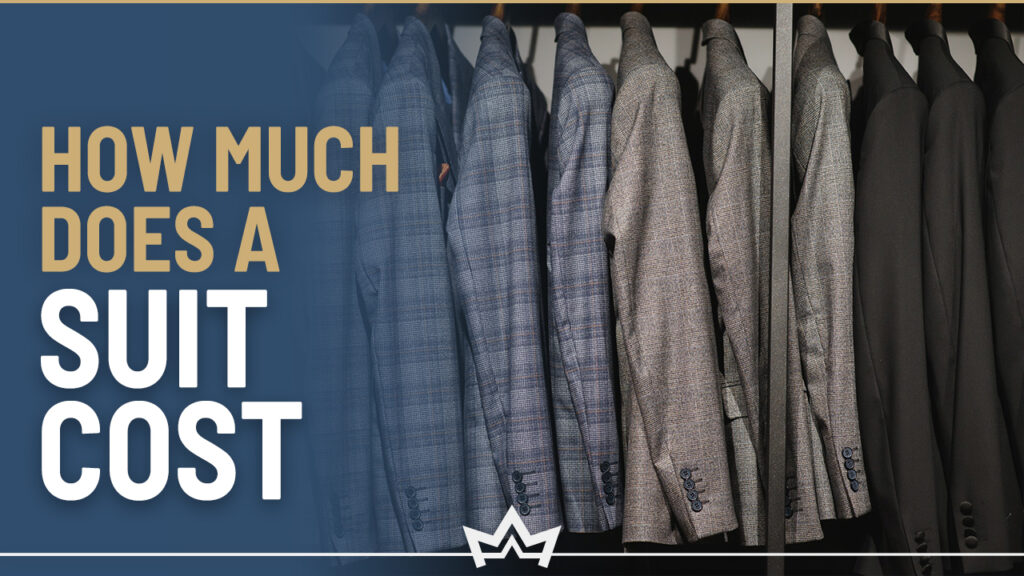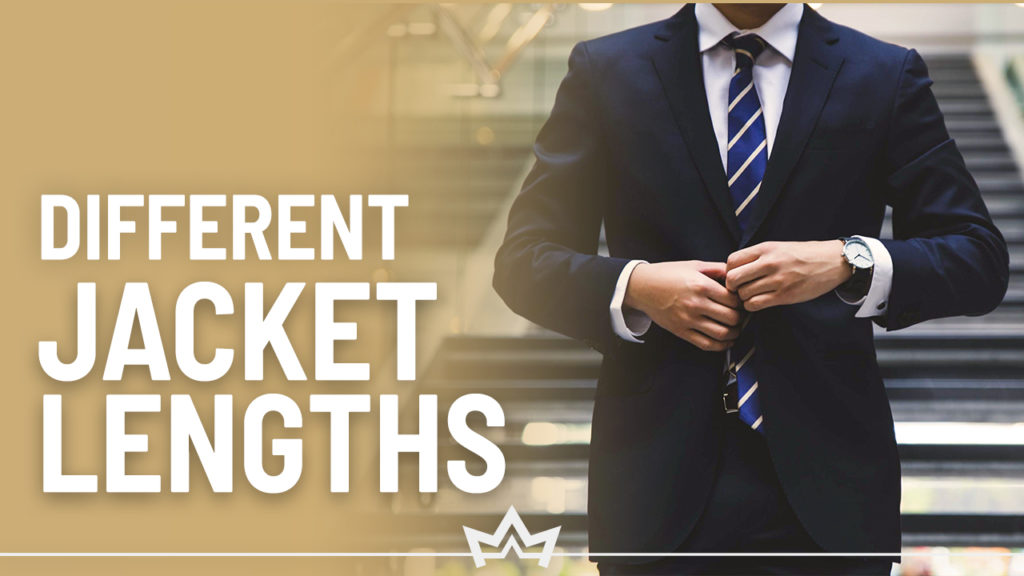The elegance of a suit comes with a cost.
How much? It varies, all the way from sub $500 to tens of grand.
But how do you know the fine wool blends draping over your shoulders are actually worth the money?
I’ll help you by digging deep into the nuances of materials, styles, structures, and everything in between.
Off-The-Rack Suit Cost
Off-the-rack are the least expensive suits. The suit usually costs below $500.
The reason for this low cost lies in suit construction, quality of the material, and the fit.
Off-the-rack suits are machine-stitched and produced for the masses. The jacket is fused or lacks canvas.
Manufacturers primarily cut the cost via fabrics. The suit fabrics blend natural fabric like wool or cotton with an artificial one like polyester.
In a worst-case scenario, the fabric will be 100% synthetic. These fabrics ultimately affect the suit’s drape, comfort, and breathability.
When retailers provide good quality suit fabric, they compensate for it via jacket lining.
Getting the jacket to fit you decently is another major concern for off-the-rack suits.
Since the suits are produced for the masses, you’ll likely need alterations for a perfect fit.
Despite all these things, I would say off-the-rack suits aren’t as bad as they sound. You can get good value for your money if you have an eye for detail.
Made-to-Measure Suit Cost
Made-to-measure is a mid-tier suit but the first serious step towards fine dressing.
A service or tailor will take your measurements and combine the components to create a suit exclusively for you.
You can customize the fabric, cut, style, and practically anything a suit can have.
Since things are more personalized here, made-to-measure suits cost more. You can expect the price anywhere between $500-$3,000.
Depending on the tailoring house, the process starts with selecting fabric and pattern. This will be the major determiner of the cost.
The next comes choosing the details for the suit. You’ll have jacket customization in everything from lapel types to vents and lining.
Made-to-measure also offers adding a monogram, pick stitching, trouser pleats, and adding or removing belt loops on the pants.

From the price point, the rule here is the more personalized the suit gets, the higher the cost will be.
Still, it does not guarantee a perfect fit as most resellers require the suit measurements to be done by you.
Bespoke Suit Cost
Bespoke represents the highest level of craftsmanship among suits. But the cost is also top-tier among the hierarchy.
You can expect a bespoke suit from the renowned tailoring houses to cost around $3,500 and above.
I like to think of bespoke tailoring as a process rather than just the action of buying a suit.
You set up an appointment; the tailor will take 20-30 different measurements to create a pattern of your body.
Then, you choose either your custom fit preference or “the house cut.” You get to wear the suit for the first time.
It takes around 3-5 fittings for the customer approval, and suits then take its final shape.
This whole process ensures you get fit with no margin of error.
You also get high possible options of customization with the suit. These include choosing full canvassing and luxury fabrics from the most renowned clothiers.
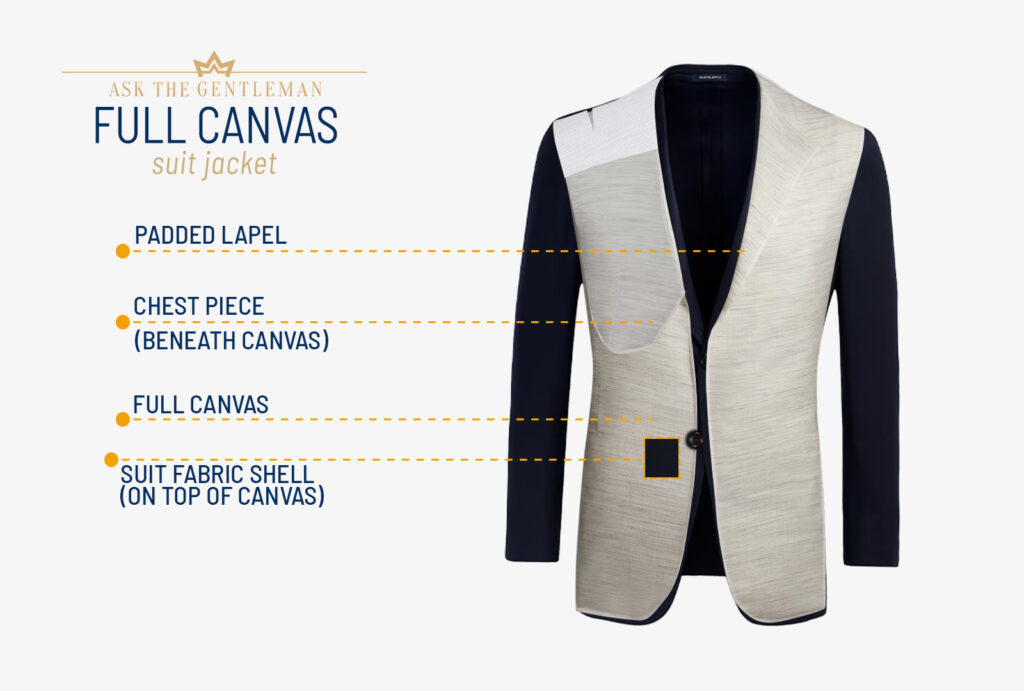
Even lapels are hand-padded, with finely crafted buttonholes representing the finest craftsmanship.
The details of a made-to-measure suit are included but appear rudimentary compared to a bespoke suit.
Second-Hand Suit Cost
Many gentlemen, especially the ones at the start of their sartorial journey, go thrifting and buy second-hand suits.
It’s a good way to enjoy quality, especially on a budget.
A second-hand suit will cost you as low as $50. The cost can fluctuate to a couple of hundred dollars for a premium piece.
The hesitancy is always there with a second-hand suit. But the value you get out of your money makes it a worthy purchase.
I suggest being informed when buying a second-hand suit. You should be able to pinpoint the identifiers of a good suit.
Look for good quality fabric, and focus on getting an absolute fit.
Never compromise the jacket’s shoulder and the pants’ waist. For most of the other things, a tailor can fix them for you.
Where to buy a second-hand suit? Your local thrift store is one option.
Online marketplaces like eBay will also save some extra bucks and provide good quality.
Key Factors That Affect Suit Cost
In the world of suits, “you get what you pay for” holds to this day.
Plus, the idea that brands excessively overcharge to make profits isn’t always true.
You can consider the suit price as having two major components. The first one is inevitable: the cost of materials and labor.
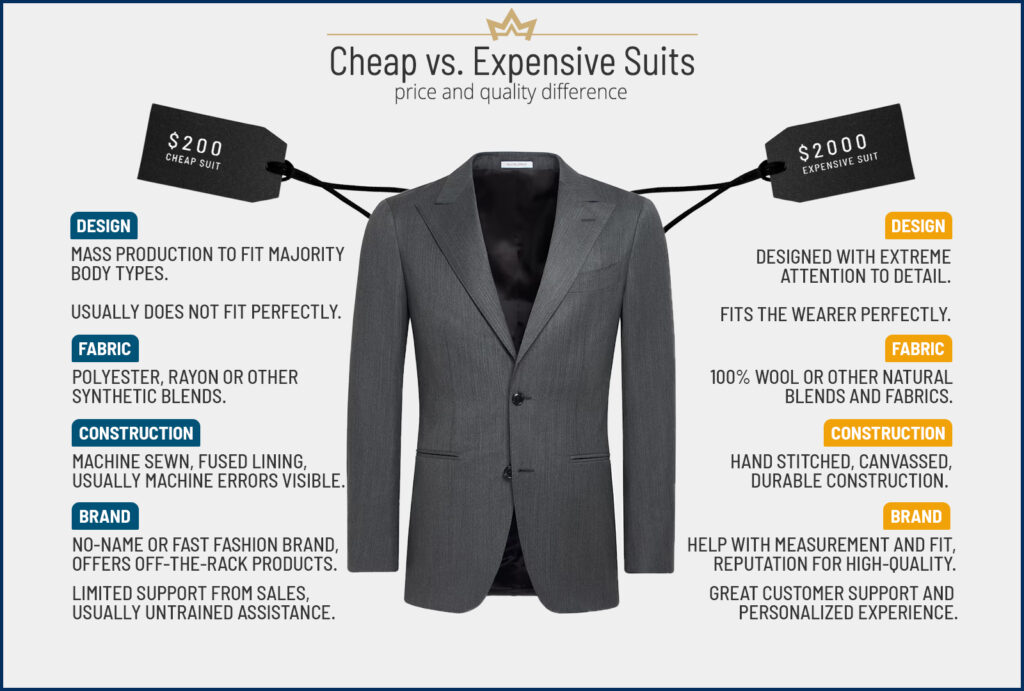
The other price component is maintaining the suit quality and keeping up with the brand reputation.
There are other factors involved, too. Worry not; you’ll get to know all of these.
Natural Materials vs. Synthetic Fabrics
The fabric serves as a structural framework of the suit, of which natural and synthetic ones are two variations.
Both have different prices and contrasting qualities.
Natural fabrics like silk, wool, cotton, and linen are quite popular. There are your environment-friendly super, durable suit fabrics.
There is a whole process behind getting a natural fabric. Silk, for example, goes from thread extraction to weaving and then getting into the raw fabric form.
Other natural fabrics also go through a similarly complicated process. Therefore, you have to pay more for these premium materials.
Synthetic materials like polyester, rayon, spandex, and acrylics are industrially prepared.
These fabrics are produced in masses and, therefore, more affordable.
Besides production, there are plenty of other factors at play.
Natural fabrics, for example, drape better, have excellent breathability and offer graceful textures.
The comfort and lifespan of natural fabrics are also quite above the level of synthetics. That also accounts for costing you more money for the suit.
Canvassing vs. Fused Interlining
One of the most important determiners of suit quality and cost is the suit construction. It can either be fused or canvassed.
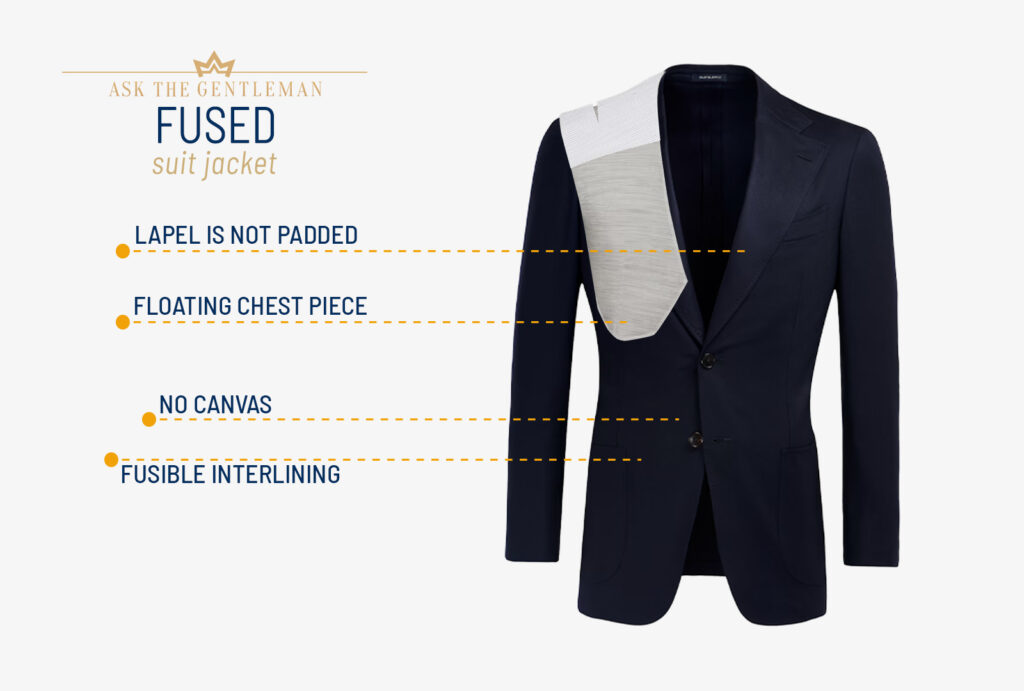
Fused suit jackets have two or more fabrics fused by an adhesive material. The first-glance look is somewhat decent, and the low cost makes it even better.
Fused interlining is a characteristic of off-the-rack garments.
In comparison, suit jackets can have an additional material called canvas sewn into the fabric.

The process of stitching the canvas into the fabric is time-consuming, and the material itself is expensive. So, canvassed jackets cost a lot more.
The higher cost of a canvassed suit isn’t only because of the tailoring intricacies. A canvas helps the fabric drape better and enhances breathability.
It also gradually takes the wearer’s body shape. So every time you wear a suit, it fits you even better.
The canvas also strengthens the fabric, making your suit last for years.
Now, you can choose between a half-canvas and a full-canvas construction.

A half-canvas suit only has the canvas in the lapel and chest area. A full-canvas suit jacket, in comparison, is almost fully lined with canvas.
The price of a full-canvas suit is almost double that of its half-canvas counterpart.
How Brand Reputation Affects the Suit Cost
In the suit business, it takes decades of quality tailoring to get a good name.
And when this reputation is just one wrong stitch way, brands try their best to never mess up things.
Customers have to pay the “quality assurance cost” in addition to the base price of the suit.
This is true for most Savile Row tailors and high-end designers like Ralph Lauren and Tom Ford.
So, every time you buy from a renowned brand, you’ll pay a little bit extra.
The alternative is to try up-and-coming brands. The cost will be less for the quality, but you’ll have to take risks on the brand reputation.
Ready-to-Wear vs. Custom-Tailored Suit
There are plenty of great ready-to-wear suit brands out there.
But when it comes to the cost, these off-the-rack suits always cost less than a custom one.
The reason is the mass production of ready-to-wear garments. Everything from fabric cutting to the assembly and stitching is done on a mass scale.
Additionally, ready-to-wear suits are created in generic sizing. You have to “fit your body” into the suit.
This compromise results in a lower price for the suit.
The custom-tailored suit, in comparison, is cut exclusively for you. The fabrics are premium, too.
The tailor makes sure the suit fits you perfectly, flattering your body. You can also choose from various suit styles.

In one or another, each of these elements of custom tailoring increases the price of the suit.
Suit Cost FAQs
How much should you spend on your first suit?
It depends on what you’re buying the suit for. However, spending $200 to $500 on a ready-to-wear suit for an entry-level job will be a good start.
Buying a suit for a wedding or other special event might require up to at least $1,000 if you’re dressing to impress.
How much will it cost you to get fitted for a suit?
It depends on the type of alteration and the tailor you choose. But generally, $20 to $100 will get your suit fitted.
It will cover the hemming of the lengths, cutting down the waist sizes, and adding/removing the buttons (not replacement).
What’s the average cost for a basic suit in the U.S.?
The basic suit in the U.S. cost between $300 to $700. The cost primarily depends on the brand.
You might get away with the suit at a cheaper price. But don’t expect a decent suit below this price range.
How much does a suit cost from Savile Row?
The suit cost from authentic Savile Row tailors starts from $ 3,500, but it can go up to $10,000 depending on the fabric.
How much should a quality suit last?
The lifespan of a good-quality suit depends on the frequency of wear.
A quality suit can last a few decades with occasional wear and proper care.

